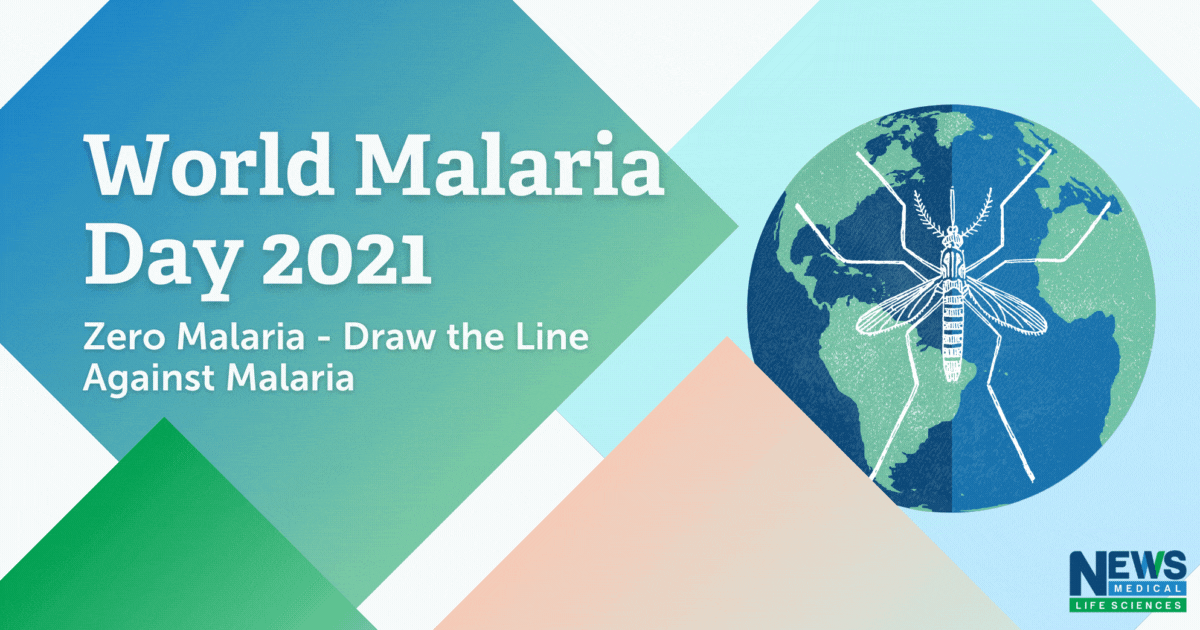 Thought LeadersDr. Laurence SlutskerSenior Technical AdvisorMalaria and Neglected Tropical Diseases, PATH
Thought LeadersDr. Laurence SlutskerSenior Technical AdvisorMalaria and Neglected Tropical Diseases, PATHIn support of World Malaria Day, News-Medical spoke to Dr. Laurence Slutsker, an internationally recognized expert in malaria, about fighting this disease in 2021.

Please can you introduce yourself and tell us about your career in research into malaria and neglected tropical diseases (NTDs)?
I would describe myself as a medical epidemiologist and public health researcher and practitioner. I began in 1987 at the U.S. Centers for Disease Control and Prevention (CDC) and over the next 30 years focused on malaria and many of its challenges.
I began working with PATH in 2016. I have had the opportunity to conduct research and support programmatic work in malaria across a variety of areas including evaluations of insecticide-treated nets, development of interventions to reduce malaria in pregnancy, assessments of antimalarial drug resistance, and malaria vaccine evaluations.
In addition, I have had the chance to work on some other critical global health issues in the areas of child and maternal health, HIV/AIDS, and diarrheal diseases, where I saw how malaria interacts with other conditions, as well as the wider health system.
“Reaching the zero malaria target” is the theme of World Malaria Day 2021 and it aims to celebrate countries around the world that are reaching or approaching malaria eradication. Malaria Zero is a campaign within the CDC Foundation that aims to eliminate malaria from Hispaniola, creating a malaria-free zone across the Caribbean. How far off do you think this is?
Hispaniola is the last remaining focus of ongoing malaria transmission in the Caribbean. The two countries on the island, Haiti and the Dominican Republic (DR) have made great strides in building their programs and working with partners to pursue the goal of elimination. The needs are many and include the need to strengthen the primary health care system to better deliver case management and conduct surveillance, as well as improving vector control coverage – all in the context of overcoming catastrophic events such as disruptions due to earthquakes, hurricanes, and civil unrest.
Despite these challenges, malaria cases have declined substantially over the last decade. Through Malaria Zero, the Ministries of Health in Haiti and DR have been working with a number of partners to expand community-based treatment, improve surveillance and mapping of disease risk, refine stratification and allocation of intervention packages, enhance vector control, and assess the value of new tools and approaches such as targeted mass drug administration in higher burden areas.
Exact timelines for malaria elimination are hard to predict, but both countries have maintained their commitment to achieving this milestone. With continued country leadership and focus, adequate resources, and good data to inform and refine program actions, Haiti and DR may be able to achieve the kind of success recently enjoyed by another country in the Region of the Americas – El Salvador – which was certified as malaria-free earlier this year.
Your career has included almost 30 years with the Centers for Disease Control and Prevention (CDC). The CDC has an incredibly important role in communicating valuable scientific information and advice to the public, something which has been especially important during the current COVID-19 pandemic. How important do you think science communication is and how does it make a difference in terms of malaria and NTDs?
It is absolutely critical, whether for COVID-19, malaria, and NTDs, or any other public health problem. The success of our tools and approaches, whether we are talking about social distancing, mask-wearing, bednet use, health care seeking for fever, or vaccine acceptance, is largely dependent on how well we engage and communicate with individuals and communities.
We can have the most wonderful tools developed from state-of-the-art science, but they will have little impact if they are not accepted and taken up by end-users. And that communication must be clear, accurate, honest, and continuously re-evaluated to ensure it stays relevant and effective.
Your current role is Senior Technical Advisor for both the Malaria and NTDs Program and the Center for Malaria Control and Elimination at PATH, an organization focused on achieving global health equity. This concept is particularly prevalent today, in a pandemic where no one is safe until everyone is protected. How do you think the world can collaborate to make health fairer and more accessible to all?
At PATH, we like to focus on person- or community-centered care. That means that every person, regardless of where they live or what they do for a living, has access to quality health care across their lifespan. Strong health systems should create health, not just respond to illness. Doing this equitably, delivering care to hard-to-reach communities, requires intentional, targeted approaches.
There is not and will never be a silver bullet. It requires a multilateral approach, political will, consistent investment, and committed partners. This is possible. We have eradicated smallpox, and last year the African continent was certified as wild polio-free. Global cooperation is key in the pursuit of health equity.
 Global Healthcare. Image Credit: ssguy/Shutterstock.com
Global Healthcare. Image Credit: ssguy/Shutterstock.com
In current times, much of the world and its resources are focused on the COVID-19 pandemic, and so it is more important than ever to raise awareness for neglected tropical diseases that continue to have devastating effects on the world’s most vulnerable populations. What needs to be done to ensure these diseases still get the funding and research that they need?
This is important for a few reasons.
We cannot address COVID-19 at the expense of progress against malaria, a preventable and treatable disease. We have learned from past outbreaks and crises –such as the 2014-2016 West Africa Ebola outbreak, that disruptions in essential health services resulted in as many as 10,000 additional preventable deaths due to malaria, HIV/AIDS, and tuberculosis.
Huge progress has been made in the fight against malaria in the past two decades – 7.6 million lives saved and 1.5 billion malaria cases prevented. Taking our foot off the gas now would have negative implications on those efforts and investments.
Even before the pandemic, progress towards eliminating malaria in the highest-burden countries had begun to stall due to a plateau in funding and political will. We must not think of this as a zero-sum game. It is not either focus on COVID-19 or malaria; rather, we must focus on both. It is important to remember that both diseases present with fever, so approaching the diagnosis and management of febrile patients in an integrated way – while ensuring health care workers are protected – is critical in the fight against both.
Further investments in ending malaria will reduce the burden on health systems and better equips them to prevent, detect, and respond to future epidemics and pandemics.
The COVID-19 pandemic has almost been a case study into the alignment of international agendas and has shown how quickly scientific and medical progress can be made when all areas of society collaborate. How can we learn from this pandemic and use global collaboration to fight NTDs successfully?
There is no doubt COVID-19 has shifted the way the world thinks about preventing, detecting, and responding to disease outbreaks. We talk about breaking the cycle of panic and neglect, where resources surge when an epidemic occurs, but then diminishes as the world goes back to normal.
I am hopeful that COVID-19 has made clear the importance of continually investing in health systems and needed research. We do not know what the next health threat will be, but we do know that strong surveillance systems, reliable supply chains, equipped health care workers, and the development of needed tools will once again be the backbone of any successful response.
All of these things are also critical for eliminating malaria. The community health systems, supply chains, and even genomic surveillance capacities that we use to fight malaria were leveraged to also fight COVID-19. Across disease areas, geographies, and sectors, the COVID-19 response has proven that the sum is greater than its parts.
One of PATH’s goals is to prepare countries across the world for outbreaks of disease, helping them to build strong health systems and providing the resources to stop diseases before they reach the epidemic or pandemic stage. It is predicted that both environmental damage and climate change will contribute to an increase in vector-borne and zoonotic diseases in the coming years. How can the world work together to support this goal of PATH’s, prepare for the increased spread of disease, and stop preventable death?
The WHO estimates that we could see an additional quarter million deaths from malnutrition, malaria, diarrhea, and heat stress each year between 2030 and 2050 because of climate change. Shifting climatic conditions affect both mosquitoes and the malaria parasite, sometimes in unpredictable ways.
Changing malaria transmission and climate-forced human movement will make it even more important to target the delivery of malaria interventions to ensure they have the biggest impact possible. Just as in the COVID-19 response, mathematical models help us take in new information and make the best decision possible to save the most lives from malaria.
Investing in proven interventions, research and development of new tools, and strong surveillance systems is key to adapting to changing situations, including in countries previously certified malaria-free.
You are an internationally recognized expert in malaria and have been a part of more than 250 publications throughout a very successful career. What part of this journey are you most proud of?
It has all been rewarding, in different ways. It has been my privilege to contribute to the development of new tools in the fight against malaria, for example through the conduct of research to assess insecticide-treated nets, prevention of malaria in pregnancy and infants, antimalarial drug efficacy, and vaccines.
At the same time, I have had the opportunity to live in an endemic setting and work in support of national program efforts to deliver services, conduct surveillance, and evaluate how programs can be adjusted to improve impact. It has been gratifying to see how far we have come over the past 30 years. But malaria is a formidable opponent- we have seen massive resurgences in disease when funding and attention wanes, so there is no time to become complacent.
Do you think a world without malaria is possible in our future and what funding and research are critical to making this happen?
I certainly believe it is possible and should be the ultimate goal of the malaria community. Eradication, defined as the “permanent reduction to zero of the worldwide incidence of infection caused by human malaria parasites as a result of deliberate activities” will save millions of lives and billions of dollars once achieved. There have been wonderful recent national elimination success stories; in fact, over the past two decades, eleven new countries have been certified as malaria-free by WHO. But, at the same time, our progress in high burden countries has plateaued, and so we must be realistic about where we are in the fight, and what it will take to get to eradication.
As summarized in a recent WHO report on malaria eradication, we cannot likely get there using our current tools and approaches. While continuing progress towards elimination in lower transmission countries, we concurrently need to refocus efforts in high burden countries to deliver more targeted intervention packages customized to the local situation to reduce morbidity and mortality.
We will also need to revitalize and increase investment in research and development for new tools for vector control, additional options for treatment and chemoprevention, and vaccines so that we will have what we need to get to zero in the highest-burden areas. And of course, we will need political leadership and advocacy to make the case for domestic and international funding to support these critical research and program efforts.
Where can readers find more information?
You can learn about PATH’s work in malaria, and epidemic preparedness and response on our website.
Read the WHO ‘Zeroing in on malaria elimination’ report here.
About Dr. Laurence Slutsker
Senior Technical Advisor, Malaria and Neglected Tropical Diseases Program, PATH
Dr. Laurence Slutsker joined PATH in May 2016 as the Director of the Malaria and Neglected Tropical Diseases Program and the Center for Malaria Control and Elimination. Dr. Slutsker has a B.S. from the University of Michigan, a medical degree from Case Western Reserve University, and a Master’s in Public Health degree from the University of California, Berkeley. He completed his medical training at the University of North Carolina, Chapel Hill, and is board certified in internal medicine and preventive medicine.
Dr. Slutsker joined the Centers for Disease Control and Prevention (CDC) in 1987 and has more than 20 years of experience with CDC in malaria. He has also held staff positions in the HIV/AIDS and diarrheal diseases programs. Dr. Slutsker has conducted epidemiologic research on a broad range of topics including malaria, causes of infant mortality in developing countries, HIV/AIDS, diarrheal diseases, and reproductive and general tropical public health.
He has served in a number of leadership positions at CDC including Director of the KEMRI/CDC Research Station in western Kenya (2001-2005), Chief of the Malaria Branch (2005-2010), Associate Director for Science, Center for Global Health (2010-2012) and Director, Division of Parasitic Diseases and Malaria (2012-2016). He has held past or current senior advisory roles with a number of organizations including WHO, Bill & Melinda Gates Foundation, NIH, FDA, and the Roll Back Malaria Partnership. He has authored or co-authored more than 240 scientific journal articles, book chapters, and other publications.
Posted in: Thought Leaders | Medical Science News | Medical Research News | Disease/Infection News | Healthcare News
Tags: AIDS, Climate Change, Diarrhea, Efficacy, Fever, Foot, Genomic, Health Care, Health Systems, heat, HIV, HIV/AIDS, Malaria, Malnutrition, Maternal Health, Medicine, Mortality, Pandemic, Polio, Pregnancy, Public Health, Research, Smallpox, Stress, Tuberculosis, Vaccine

Written by
Emily Henderson
Emily Henderson graduated with a 2:1 in Forensic Science from Keele University and then completed a PGCE in Chemistry. Emily particularly enjoyed discovering new ideas and theories surrounding the human body and decomposition.In her spare time, Emily enjoys watching crime documentaries and reading books. She also loves the outdoors, enjoying long walks and discovering new places.Emily aims to travel and see more of the world, gaining new experiences and trying new cultures. She has always wanted to visit Australia and Indonesia.
Source: Read Full Article